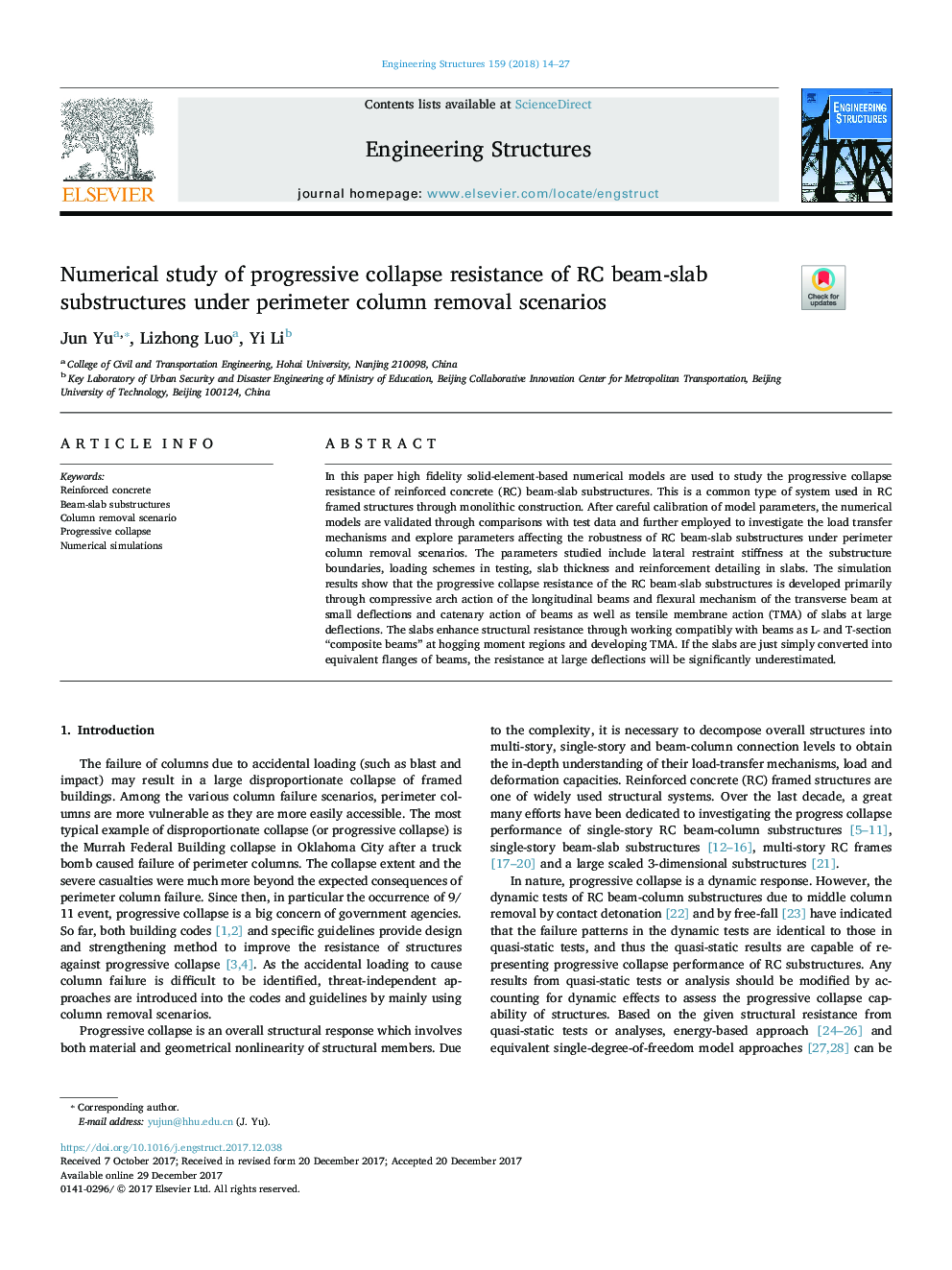| Article ID | Journal | Published Year | Pages | File Type |
|---|---|---|---|---|
| 6738452 | Engineering Structures | 2018 | 14 Pages |
Abstract
In this paper high fidelity solid-element-based numerical models are used to study the progressive collapse resistance of reinforced concrete (RC) beam-slab substructures. This is a common type of system used in RC framed structures through monolithic construction. After careful calibration of model parameters, the numerical models are validated through comparisons with test data and further employed to investigate the load transfer mechanisms and explore parameters affecting the robustness of RC beam-slab substructures under perimeter column removal scenarios. The parameters studied include lateral restraint stiffness at the substructure boundaries, loading schemes in testing, slab thickness and reinforcement detailing in slabs. The simulation results show that the progressive collapse resistance of the RC beam-slab substructures is developed primarily through compressive arch action of the longitudinal beams and flexural mechanism of the transverse beam at small deflections and catenary action of beams as well as tensile membrane action (TMA) of slabs at large deflections. The slabs enhance structural resistance through working compatibly with beams as L- and T-section “composite beams” at hogging moment regions and developing TMA. If the slabs are just simply converted into equivalent flanges of beams, the resistance at large deflections will be significantly underestimated.
Related Topics
Physical Sciences and Engineering
Earth and Planetary Sciences
Geotechnical Engineering and Engineering Geology
Authors
Jun Yu, Lizhong Luo, Yi Li,
